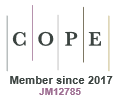Data linkage for healthcare research: basics and important considerations
Maria C. Inacio A B * and Olivia Ryan A
A
A
B
Abstract
There is increasing recognition of the benefits of robust data infrastructures, capacity building for a data informed society, and strategic policy and financial support to enable data integration (also known as data linkage). However, despite widespread availability of data, and recognition of the value of data linkage and investment in this area, data linkage continues to be complex, timely, and costly, and these elements are often underestimated by researchers. In this article, we introduce data linkage basics for Australian researchers and discuss important considerations for those embarking on healthcare research that utilises data linkage.
Keywords: administrative health data, data integration, data linkage, health outcomes, research.
References
1 World Health Organization. World Health Organization Data Principles. WHO; 2010. Available at https://data.who.int/docs/librariesprovider22/reference-documentation/who-data-principles-10aug.pdf?sfvrsn=edecd563_5 [accessed 20 September 2024].
2 UK Office for Statistics Regulation. Systemic Review Programme - Joining Up Data for Better Statistics. 2018. Available at https://osr.statisticsauthority.gov.uk/wp-content/uploads/2018/09/Data-Linkage-Joining-Up-Data.pdf [accessed 5 November 2024].
3 National Institute on Aging. NIA Data LINKAGE Program (LINKAGE). National Institutes of Health; 2024. Available at https://www.nia.nih.gov/research/dbsr/nia-data-linkage-program-linkage [accessed 5 November 2024].
4 Productivity Commission. Data Availability and Use: Overview & Recommendations. Canberra: Australian Government, Productivity Commission; 2017. Available at https://www.pc.gov.au/inquiries/completed/data-access/report/data-access-overview.pdf [accessed 6 May 2025].
5 Australian Academy of Science and Australian Academy of Health and Medical Sciences. Improving Accessibility and Linkage of Data to Achieve Better Health Outcomes for All Australians. 2019. Available at https://www.science.org.au/files/userfiles/support/position-statements/linkage-data-for-better-health-outcomes-final.pdf [accessed 5 November 2024].
6 Australian Academy of Science. Advancing data-intensive research in Australia. Canberra; Australian Academy of Science; 2021. Available at https://www.science.org.au/files/userfiles/support/documents/advancing-data-intensive-research-in-australia-11-11-21.pdf [accessed 5 November 2024].
7 Australian Government Department of Health and Aged Care. Australian Medical Research and Innovation Strategy 2016-2021. 2016. Available at https://www.health.gov.au/resources/publications/mrff-australian-medical-research-and-innovation-strategy-2016-2021?language=en [accessed 2 October 2024].
8 Australian Government Department of Health and Aged Care. Medical Research Future Fund 3rd 10-year Investment Plan 2024-25 to 2033-34. 2024. Available at https://www.health.gov.au/sites/default/files/2024-06/mrff-3rd-10-year-investment-plan-2024-25-to-2033-34.pdf [accessed 5 November 2024].
9 Australian Government Department of Health and Aged Care. Medical Research Future Fund. Performance indicators towards the impact of the Medical Research Future Fund. 2023. Available at https://www.health.gov.au/resources/publications/performance-indicators-towards-the-impact-of-the-medical-research-future-fund?language=en [accessed 18 December 2024].
10 Australian Government. User Guide. Data Integration. Rights, Roles and Responsibilities - Integrating Authorities. 2024. Available at https://toolkit.data.gov.au/data-integration/roles-and-responsibilities/integrating-authorities.html [accessed 20 September 2024].
11 The Sax Institute. The Secure Unified Research Environment - Conducting research in SURE. Glebe: The Sax Institute; 2024. Available at https://www.saxinstitute.org.au/solutions/sure/conducting-research-in-sure/ [accessed 20 September 2024].
12 Australian Government Australian Institute of Health and Welfare. Our secure linkage environment. Canberra: AIHW; 2024. Available at https://www.aihw.gov.au/our-services/data-linkage/our-secure-linkage-environment [accessed 20 September 2024].
13 Population Health Research Network. PHRN Metadata Platform. Crawley: PHRN; 2024. Available at https://www.phrn.org.au/for-researchers/data-collections-metadata-platform/ [accessed 20 September 2024].
14 Australian Government. User Guide. Data Integration. Statistical Data Integration. 2024. Available at https://toolkit.data.gov.au/data-integration/statistical-data-integration.html [accessed 20 September 2024].
15 Australian Government Federal Register of Legislation. Data Availability and Transparency Act 2022. 2024. Available at https://www.legislation.gov.au/C2022A00011/latest/text [accessed 6 January 2025].
16 Australian Government. Data Integration Projects - Data Linking Information Series - Probabilistic Linking. 2024. Available at https://toolkit.data.gov.au/data-integration/data-integration-projects/probabilistic-linking.html [accessed 18 December 2024].
17 Population Health Research Network. Costs and timeframes. Crawley: PHRN; 2021. Available at https://www.phrn.org.au/wp-content/uploads/2024/12/costs-and-timeframes-summary.pdf [accessed 16 June 2025].
18 Inacio MC, Caughey GE, Wesselingh S. Registry of Senior Australians (ROSA): integrating cross-sectoral information to evaluate quality and safety of care provided to older people. BMJ Open 2022; 12(11): e066390.
| Crossref | Google Scholar | PubMed |
19 Australian Government Australian Institute of Health and Welfare. National Health Data Hub. Canberra: AIHW; 2024. Available at https://www.aihw.gov.au/reports-data/nhdh/data [accessed 20 September 2024].
20 Australian Bureau of Statistics. PLIDA/MADIP Research Projects. Belconnen: ABS; 2024. Available at https://www.abs.gov.au/about/data-services/data-integration/integrated-data/person-level-integrated-data-asset-plida/plidamadip-research-projects [accessed 25 September 2024].
21 Australian Government Australian Institute of Health and Welfare. SURE data access costs. 2024. Available at https://www.aihw.gov.au/about-our-data/accessing-australian-government-data/dss-data/sure-data-access-costs [accessed 19 December 2024].
22 Australian Bureau of Statistics. DataLab. Belconnen: ABS; 2021. Available at https://www.abs.gov.au/statistics/microdata-tablebuilder/datalab#cost [accessed 20 September 2024].
23 Australian Government Australian Institute of Health and Welfare. National Health Data Hub - Researcher access, eligibility & costs. Canberra: AIHW; 2025. Available at https://www.aihw.gov.au/reports-data/nhdh/researcher-access-eligibility-costs [accessed 21 February 2025].
25 Harron K. Data linkage in medical research. BMJ Med 2022; 1(1): e000087.
| Crossref | Google Scholar | PubMed |
26 Nicholls SG, Langan SM, Sørensen HT, et al. The RECORD reporting guidelines: meeting the methodological and ethical demands of transparency in research using routinely-collected health data. Clin Epidemiol 2016; 8: 389-92.
| Crossref | Google Scholar | PubMed |
27 Irvine K, Hall R, Taylor L. A profile of the Centre for Health Record Linkage. Int J Popul Data Sci 2022; 4(2): 1142.
| Crossref | Google Scholar | PubMed |
28 Smith M, Flack F. Data Linkage in Australia: The First 50 Years. Int J Environ Res Public Health 2021; 18(21): 11339.
| Crossref | Google Scholar | PubMed |
29 Boyd JH, Ferrante AM, O’Keefe CM, et al. Data linkage infrastructure for cross-jurisdictional health-related research in Australia. BMC Health Serv Res 2012; 12: 480.
| Crossref | Google Scholar | PubMed |


